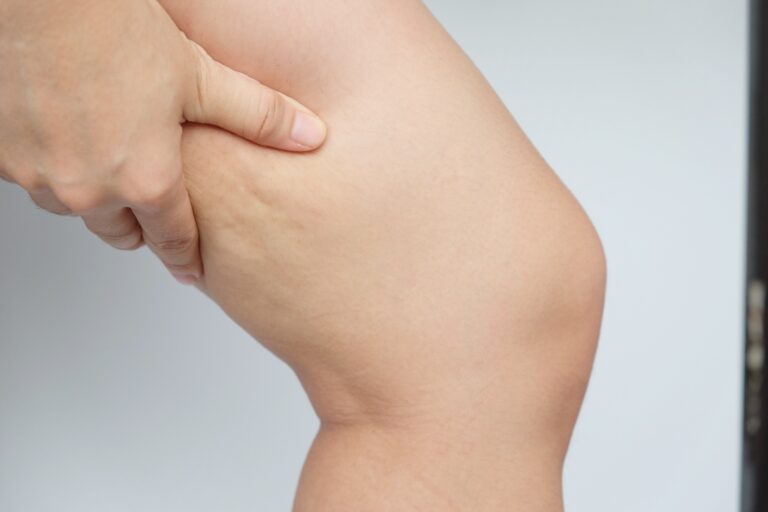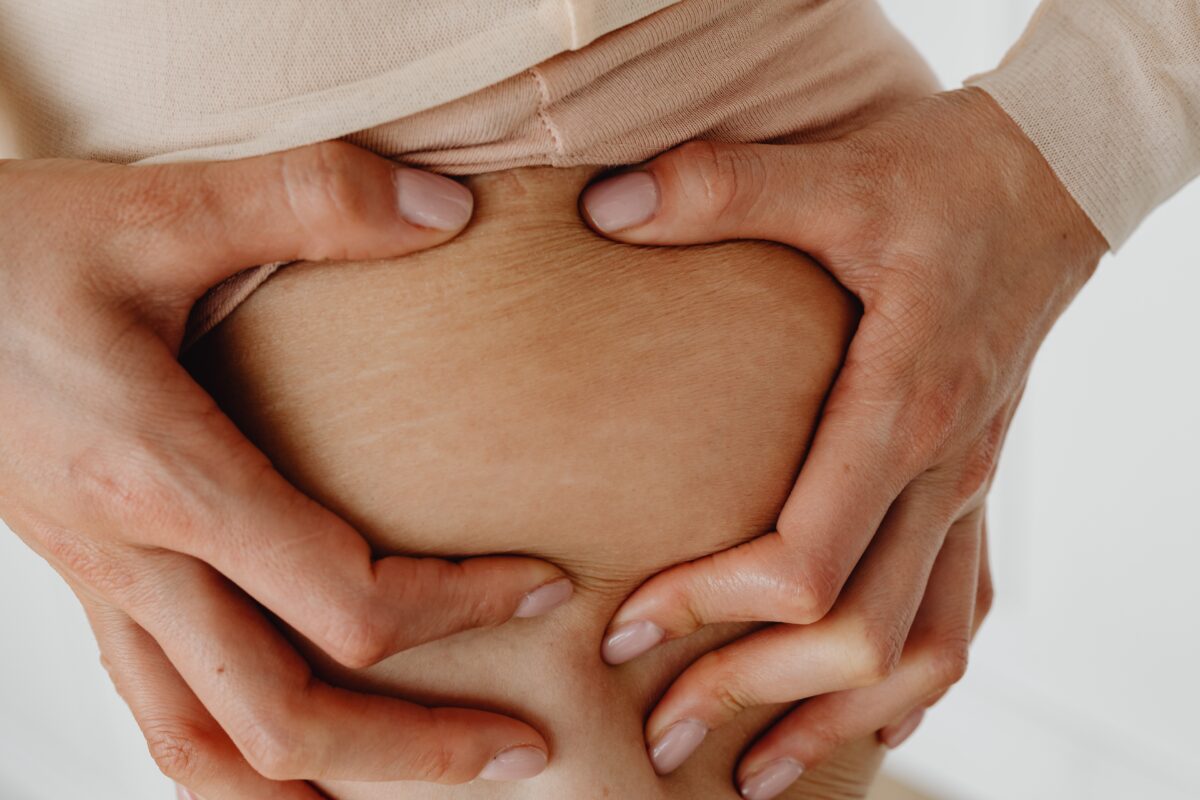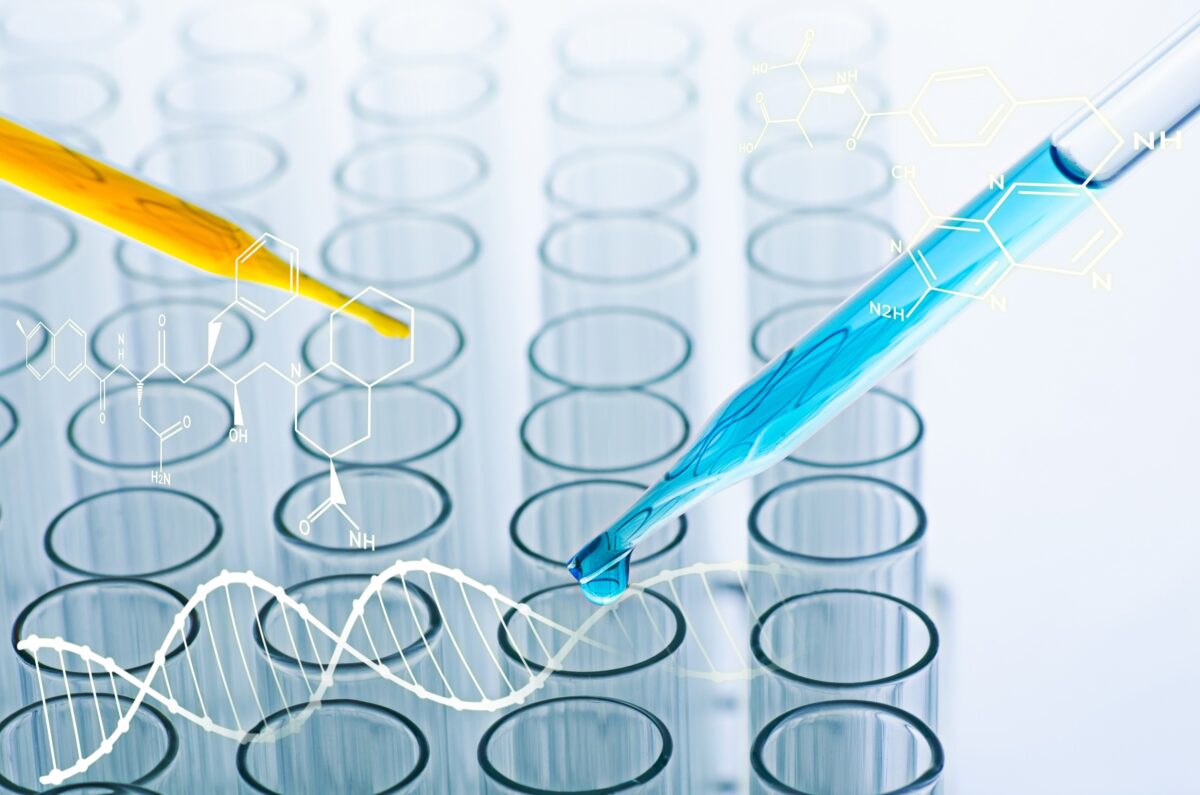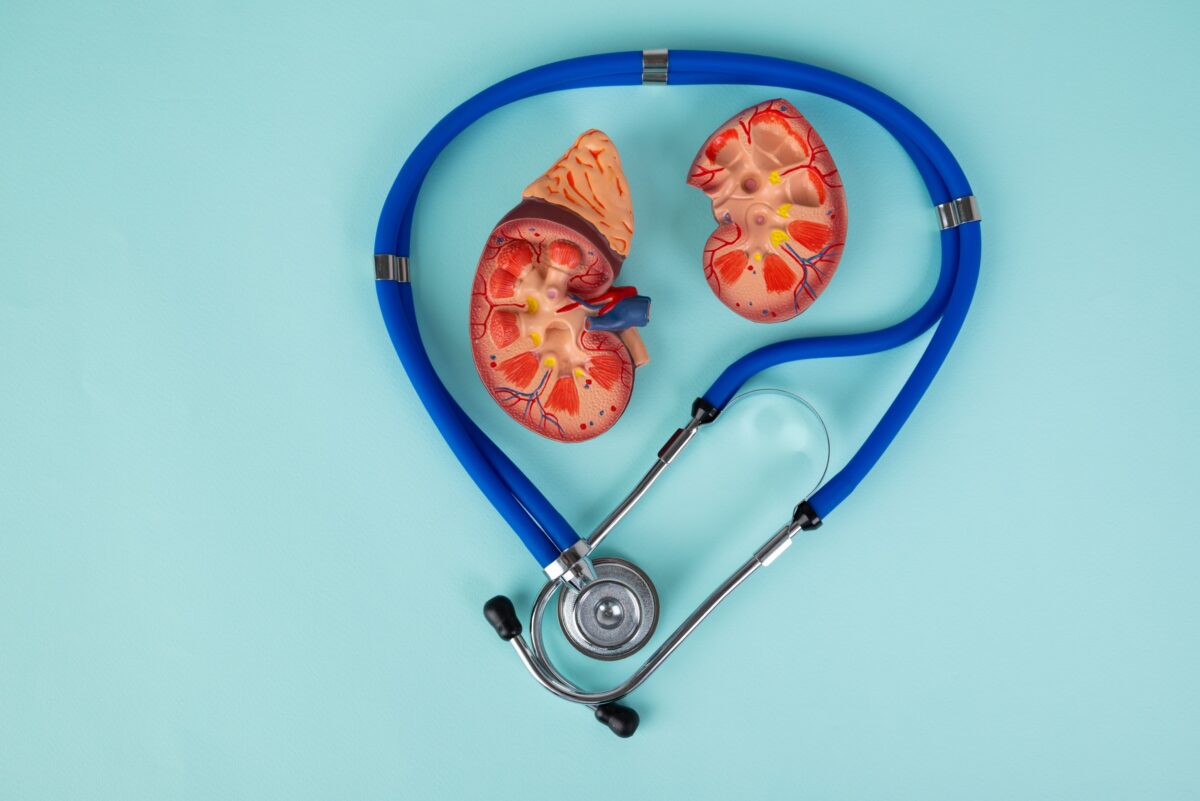Know More About Your Genetic Predisposition to Inguinal Hernia
Aira
on
December 31, 2023
Latest Posts
Table of Contents
Know More About Your Genetic Predisposition to Inguinal Hernia
Date of Content: December 2, 2023
Written by: Jess Gayo
Reviewed by: Maarit Tiirikainen, PhD
Overview
What is Inguinal Hernia?
The human body is full of wonders and can do so much more than we think it is capable of. Despite its ability to house dozens of vital organs, the human body still has chinks in its evolutional armor. One such occurrence is a hernia – this condition occurs when part of your insides bulges through an opening or weakness in the muscle or tissue that contains it.
There are many types of hernias, one of which is an inguinal hernia. An inguinal hernia is a medical condition characterized by the protrusion of abdominal contents, such as a part of the intestine, through a weakened area or opening in the abdominal wall. The term “inguinal” refers to the groin region, where these hernias commonly occur. It’s important to note that inguinal hernias are more prevalent in men than women.
The inguinal canal, a passageway in the abdominal wall, is susceptible to weakening over time due to aging, congenital predisposition, or increased abdominal pressure. According to the National Institutes of Health (NIH), inguinal hernias are a prevalent condition, with millions of cases reported annually in the United States alone.
Symptoms of inguinal hernias often include a noticeable bulge or swelling in the groin area, discomfort, and sometimes pain, especially when coughing or lifting heavy objects. While surgical intervention is the most common and effective treatment, the genetic component of inguinal hernias is an ongoing area of research, aiming to understand the hereditary factors contributing to their development.

Is Inguinal Hernia Dangerous to Your Well-Being?
Inguinal hernias, while not inherently life-threatening, can pose potential wellness issues that warrant attention and intervention. Complications associated with untreated inguinal hernias can include incarceration and strangulation. Incarceration occurs when the herniated tissue becomes trapped in the abdominal wall, potentially leading to obstruction of the bowel. This condition may manifest as severe pain, nausea, and the inability to pass stool or gas.
If left unaddressed, further complications arise, such as strangulation, where blood supply to the trapped tissue is compromised. Strangulated hernias constitute a medical emergency, as the lack of blood flow can result in tissue damage and, in severe cases, tissue death.
Surgical intervention is the primary treatment for inguinal hernias and is generally considered low-risk. The UK National Institute for Health and Care Excellence (NICE) emphasizes the importance of timely surgical repair to prevent complications.
While the condition itself may not be immediately life-threatening, the potential for complications underscores the significance of addressing inguinal hernias promptly to ensure the maintenance of optimal well-being and prevent the progression to more severe and critical stages.
What are the Types of Inguinal Hernia?
There are two main types of inguinal hernias:
- Indirect Inguinal Hernia: The most common type, often present from birth. While it can affect both men and women, it is more prevalent in men. In males, the testicle initially forms inside the abdomen and descends to the scrotum through an opening in the groin. If this opening doesn’t close at birth, it can lead to an indirect inguinal hernia. In women, this hernia may occur if reproductive organs or the small intestine protrudes into the groin due to weak abdominal muscles.
- Direct Inguinal Hernia: Typically seen in adults, this hernia results from the gradual weakening of abdominal muscles over time. Unlike indirect hernias, direct inguinal hernias occur exclusively in men.
What Affects the Development of Inguinal Hernia?
The development of inguinal hernias can be influenced by factors such as genetics, age, sex (more common in men), and conditions causing increased abdominal pressure (obesity, chronic coughing).
Genetic Factors
The genetic factors contributing to inguinal hernia development involve a complex interplay of inherited traits that influence the structural integrity of the abdominal wall. Some genetic variants are often linked to connective tissue metabolism and maintenance, highlighting the role of collagen and other structural proteins in the integrity of the abdominal wall. Mutations or variations in these genes may contribute to a predisposition to herniation.
EFEMP1 Gene
Modulation of extracellular matrix components is a function of EFEMP1 (EGF-containing fibulin-like extracellular matrix protein 1). Extracellular matrix protein structure and function may be impacted by variations in the EFEMP1 gene, particularly the SNP rs2009262. Changes in the extracellular matrix have the potential to exacerbate disorders such as hernias by compromising the strength and integrity of connective tissues.
EBF2 Gene
Early B-cell factor 2 (EBF2) is a gene involved in tissue differentiation and embryonic development. The formation and upkeep of tissues in the abdominal wall may be impacted by genetic variants in EBF2, such as the SNP rs6991952. Hernia susceptibility may increase due to weakening of the abdominal wall caused by changes in tissue structure or development.
Collagen Metabolism Genes
Collagen is a crucial protein providing strength and structure to tissues, including those in the abdominal wall. Mutations in genes related to collagen metabolism, such as COL1A1 and COL3A1, have been implicated in the development of hernias. These genetic variations may compromise the tensile strength of the connective tissues, making individuals more susceptible to herniation.
While these genetic factors provide insights into the hereditary aspects of inguinal hernias, genetic predisposition alone may not determine the development of hernias. Environmental factors, lifestyle choices, and other non-genetic influences can also contribute to the overall likelihood. Additionally, the impact of genetic variations can be amplified or reduced by environmental factors and individual conditions.
Environmental Factors
Inguinal hernias are influenced by several environmental factors in addition to genetic predisposition. For a complete picture of potential hernia development, it is imperative to comprehend these environmental factors.
Age and Gender
- Age: Inguinal hernias are more common in older individuals due to the natural weakening of the abdominal wall with age. The risk increases significantly after the age of 40.
- Gender: Men are more prone to inguinal hernias than women. This difference is attributed to the persistence of the processus vaginalis (a structure in fetal development) in males, which leaves a potential weak point in the abdominal wall.
Increased Intra-Abdominal Pressure
Hernias are often a result of conditions that cause persistent rises in intra-abdominal pressure. Since extra abdominal fat puts strain on the abdominal wall, obesity is the main risk factor.
Chronic Cough and Respiratory Conditions
Constant coughing can strain the abdominal muscles and increase the risk of herniation. It is frequently linked to long-term respiratory disorders like chronic obstructive pulmonary disease (COPD) or circumstances that induce frequent coughing, such as smoking.
Heavy Lifting and Straining
The risk of inguinal hernias might be raised by occupations or activities involving heavy lifting or prolonged straining. This is especially important for jobs requiring a lot of manual labor or frequent heavy lifting.
Pregnancy and Childbirth
Inguinal hernias in women can occur as a result of pregnancy and childbirth. The tissues may become weaker due to the stress of childbirth and the increased intra-abdominal pressure that occurs during pregnancy.
Connective Tissue Disorders
Hernia risk may be elevated by connective tissue disorders such as Marfan syndrome or Ehlers-Danlos syndrome. The connective tissues, especially those in the abdominal wall, are weakened and less elastic as a result of these illnesses.
Previous Abdominal Surgeries
Previous abdominal surgeries, especially those involving the lower abdomen, can weaken the abdominal wall and increase the likelihood of herniation at the surgical site.
Ascites
Accumulation of fluid in the abdominal cavity (ascites), often associated with liver cirrhosis, can exert pressure on the abdominal wall and contribute to hernia development.
Smoking
Smoking is considered a risk factor for inguinal hernias. The chronic cough associated with smoking, as well as potential effects on connective tissues, may contribute to herniation.
Hypermobility Syndrome
Due to the laxity of connective tissues, people with joint hypermobility syndrome—a condition marked by greater joint flexibility—may be more prone to inguinal hernias.
Gaining knowledge about the interaction between genetic susceptibility and various environmental variables offers a more complete understanding of the development of inguinal hernias.
Reducing lifestyle risk factors and addressing modifiable risk factors can be important steps in helping prevent hernias. For individualized guidance based on their health status and risk factors, people with specific concerns should speak with healthcare professionals.
Is Inguinal Hernia the Same as Umbilical Hernia?
Umbilical hernias and inguinal hernias are two different kinds of hernias that vary in characteristics and location. When a section of the intestine or other abdominal stuff pokes through a weak place in the abdominal wall, it causes an inguinal hernia, which is felt in the groin area. The condition is more prevalent in men and frequently presents as a groin bulge.
On the other hand, an umbilical hernia is a visible bulge caused by a portion of the intestine pushing through the abdominal wall, usually near the navel (umbilicus). In contrast to inguinal hernias, umbilical hernias can affect adults as well as newborns.
Umbilical hernias are somewhat frequent in infants and usually go away on their own as the abdominal muscles get stronger. In adults, they may develop due to factors such as obesity, pregnancy, or previous abdominal surgeries.
Can an Inguinal Hernia Heal Itself?
Usually, an inguinal hernia does not heal by itself. To address the protrusion of abdominal contents through the compromised abdominal wall, medical intervention is typically necessary. When an inguinal hernia occurs, it usually doesn’t go away and instead gets worse with time.
Research emphasizes that the primary and most successful treatment for inguinal hernias is surgical surgery. To stop a recurrence, surgery entails putting the projecting tissue back in its correct location and strengthening the weak abdominal wall.
While watchful waiting under a doctor’s supervision may be the preferred course of action in certain situations where minor hernias generate few symptoms, this does not represent a self-healing process. Individuals experiencing symptoms or suspecting an inguinal hernia should seek medical advice for proper diagnosis and guidance on the most suitable treatment options.
Symptoms of Inguinal Hernia
Inguinal hernias can present with various symptoms, and the severity may vary among individuals. Common signs of an inguinal hernia may include:
- Visible Bulge: One of the hallmark symptoms is the appearance of a noticeable bulge in the groin or scrotum. This bulge may become more pronounced when coughing or straining.
- Discomfort or Pain: Individuals with inguinal hernias often experience discomfort or pain around the bulging area. This discomfort may range from a dull ache to sharp pain and can worsen with physical activity.
- Heaviness or Pressure: Some individuals describe a feeling of heaviness or pressure in the groin, particularly when standing or lifting heavy objects.
- Swelling and Tenderness: Swelling and tenderness may accompany the bulge, indicating inflammation or irritation of the herniated tissue.
- Gastrointestinal Symptoms: In some cases, inguinal hernias can cause digestive symptoms such as nausea, vomiting, or a feeling of fullness, especially if the hernia becomes trapped (incarcerated) or the blood supply is compromised (strangulated).
Not every inguinal hernia exhibits obvious symptoms. While some might not cause any symptoms, others might cause a great deal of difficulty. Furthermore, problems like strangulation necessitate prompt medical assistance.
For an accurate diagnosis and suitable treatment, people who have ongoing groin pain, swelling, or the emergence of a bulge should get in touch with a doctor promptly. To avoid complications and guarantee the best possible results while treating inguinal hernias, early detection and action are essential.
Prevention and Treatment of Inguinal Hernia
Prevention
While some factors contributing to inguinal hernias, such as genetics and age, are beyond control, certain lifestyle measures can help reduce the likelihood of hernia development:
- Maintain Optimal Weight: Obesity is a significant risk factor for inguinal hernias. Maintaining a optimal weight through a balanced diet and regular exercise can reduce the strain on the abdominal wall.
- Proper Lifting Technique: When lifting heavy objects, use proper lifting techniques to minimize strain on the abdominal muscles. Bend at the knees, keep the object close to the body, and avoid twisting while lifting.
- Avoiding Prolonged Straining: Activities involving prolonged straining, such as chronic constipation, can develop hernia. Adequate fiber intake and hydration can help prevent constipation.
- Smoking Cessation: Smoking is associated with an increased risk of hernias, likely due to chronic coughing. Quitting smoking can mitigate this risk.
Treatment
The primary treatment for inguinal hernias is surgical intervention. According to guidelines from organizations like the American College of Surgeons, surgical repair is recommended to prevent complications and alleviate symptoms. There are two main approaches to hernia repair:
- Hernia Repair Surgery: This is the most common and effective treatment. During the procedure, the protruding tissue is returned to its proper place, and the weakened abdominal wall is reinforced. The surgeon may use open surgery or minimally invasive techniques, such as laparoscopic surgery.
There are two primary surgical approaches for inguinal hernia:
- Open Repair: In this procedure, an incision is made in the groin area. The surgeon relocates the hernia back into the abdomen and closes the abdominal wall using stitches. A mesh may be employed to reinforce the closure and minimize the risk of hernia recurrence.
- Laparoscopy or Robotic-Assisted Repair: This method involves a few small incisions and a slender scope with a tiny camera. The surgeon utilizes the scope to mend the hernia, and in some cases, operates from a console guiding robotic arms. Mesh is commonly used for these repairs. Minimally invasive approaches like laparoscopy or robotic-assisted repair result in shorter recovery times and less severe pain compared to open repair procedures.
- Watchful Waiting: In cases of small or asymptomatic hernias, a healthcare provider may choose a watchful waiting approach, monitoring the hernia’s progress and addressing it if symptoms worsen. However, this is not a definitive treatment and is usually reserved for specific cases.
A combination of lifestyle measures for prevention and timely surgical intervention forms a comprehensive approach to managing inguinal hernias.
LifeDNA’s Inguinal Hernia Report
Unlock the secrets of your genetic wellness with LifeDNA’s Inguinal Hernia Report. Our comprehensive analysis delves into your genetic predispositions, providing insights into factors influencing inguinal hernia risk. Take charge of your well-being with personalized recommendations tailored to your unique genetic profile.
Ready to explore more? Elevate your understanding of personal wellness with LifeDNA’s Wellness Report. Dive into other informative blogs, such as our Smoking Behavior and Nicotine Dependence Report, Longevity Report, and Male Pattern Baldness Report. Empower yourself with genetic insights and embark on a journey to optimal well-being. Start LifeDNA today.
Summary
- A hernia develops when a portion of your internal organs protrudes through a tear or weakening in the muscle or tissue that houses them.
- The protrusion of abdominal contents, such as a portion of the intestine, through a weak spot or opening in the abdominal wall is known as an inguinal hernia. The groin area, where these hernias typically develop, is referred to as the “inguinal” region.
- An obvious bulge or swelling in the groin area, as well as discomfort and occasional pain—especially while coughing or carrying heavy objects—are common symptoms of inguinal hernias.
- Inguinal hernia risk is also influenced by lifestyle decisions, environmental variables, genetics, and other non-genetic factors.
- A comprehensive strategy for managing inguinal hernias combines preventive lifestyle changes with prompt surgical surgery.
References
- https://www.hopkinsmedicine.org/health/conditions-and-diseases/hernias/inguinal-hernia#:~:text=The%20way%20to%20repair%20an,strangulated%20hernia%20in%20the%20future.
- https://my.clevelandclinic.org/health/diseases/15757-hernia
- https://www.niddk.nih.gov/health-information/digestive-diseases/inguinal-hernia#:~:text=An%20inguinal%20hernia%20is%20a,passages%20are%20called%20inguinal%20canals.
- https://www.nice.org.uk/guidance/ta83
- https://www.ncbi.nlm.nih.gov/books/NBK513332/#:~:text=Inguinal%20hernias%20are%20further%20subdivided,may%20extend%20into%20the%20scrotum.
- https://pubmed.ncbi.nlm.nih.gov/33131351/
- https://www.nature.com/articles/ncomms10130
- https://pubmed.ncbi.nlm.nih.gov/23925543/#:~:text=Our%20results%20revealed%20an%20increased,risk%20for%20developing%20inguinal%20hernias.
- https://www.ncbi.nlm.nih.gov/pmc/articles/PMC10132853/
- https://www.hopkinsmedicine.org/health/conditions-and-diseases/hernias/inguinal-and-umbilical-hernia#:~:text=A%20hernia%20that%20occurs%20in,is%20called%20an%20inguinal%20hernia.
- https://myhealth.alberta.ca/Health/Pages/conditions.aspx?hwid=za1162#:~:text=bulge%20go%20away.-,The%20hernia%20won’t%20heal%20on%20its%20own.,and%20more%20tissue%20bulges%20through.
- https://www.mayoclinic.org/diseases-conditions/inguinal-hernia/symptoms-causes/syc-20351547
- https://www.medicalnewstoday.com/articles/311574
Customer Reviews




*Understanding your genetics can offer valuable insights into your well-being, but it is not deterministic. Your traits can be influenced by the complex interplay involving nature, lifestyle, family history, and others.
Our reports have not been evaluated by the Food and Drug Administration. The contents on our website and our reports are for informational purposes only, and are not intended to diagnose any medical condition, replace the advice of a healthcare professional, or provide any medical advice, diagnosis, or treatment. Consult with a healthcare professional before making any major lifestyle changes or if you have any other concerns about your results. The testimonials featured may have used more than one LifeDNA or LifeDNA vendors’ product or reports.
























